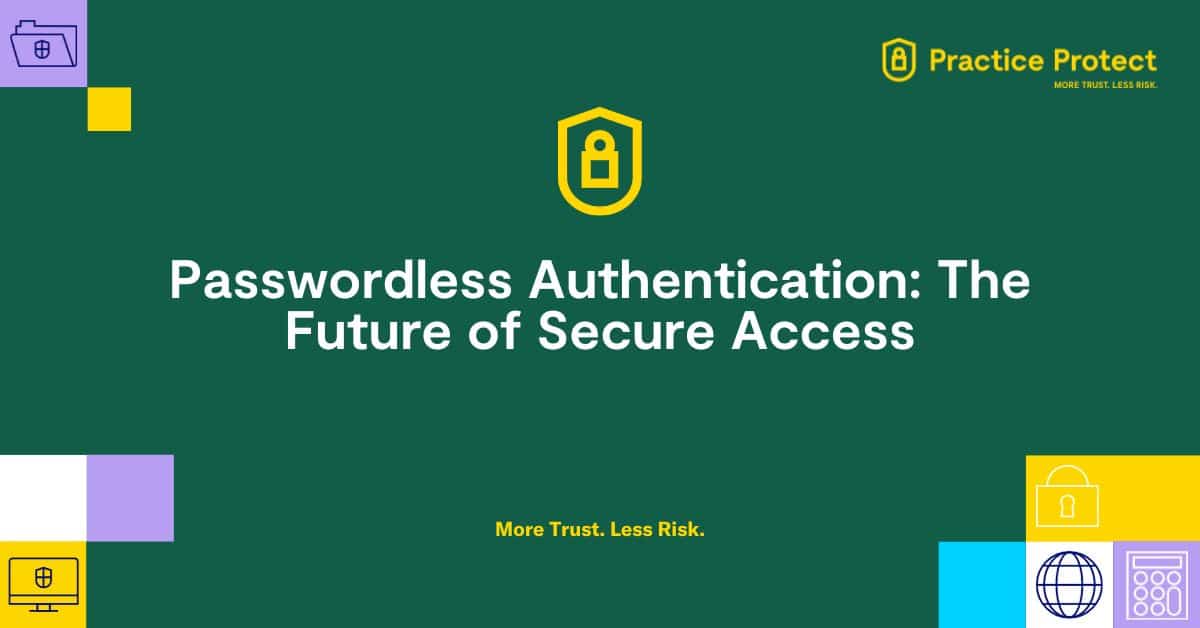Passwordless Authentication: The Future of Secure Access

In today’s digital age, securing online accounts and sensitive information is more critical than ever, especially for accounting firms entrusted with safeguarding confidential client data. Traditional password-based authentication methods, while widely used, are increasingly proving to be vulnerable to various security threats. As a result, the tech industry has been actively exploring more secure and convenient alternatives, and one approach that’s gaining traction is “passwordless authentication.”
The Problem with Passwords
Before we delve into passwordless authentication, let’s understand the issues associated with traditional passwords. Passwords, despite their ubiquity, come with a host of challenges:
- Weak Passwords: Users often choose simple and easily guessable passwords, putting their accounts at risk.
- Password Reuse: Many people reuse passwords across multiple accounts, which means a breach of one account can compromise others.
- Data Breaches: High-profile data breaches have exposed billions of usernames and passwords, leading to widespread identity theft.
- User Friction: Passwords can be a source of frustration for users who must remember and manage multiple complex passwords.
What Is Passwordless Authentication?
Passwordless authentication, as the name suggests, eliminates the need for traditional passwords. Instead, it relies on alternative methods to verify a user’s identity. These methods can include biometrics (e.g., fingerprint or facial recognition), security keys, or one-time passcodes sent via email or SMS.
How Passwordless Authentication Works
- Biometrics: Biometric authentication uses unique physical or behavioral traits, such as fingerprints or facial features, to confirm a user’s identity. Biometric data is securely stored and compared during login.
- Security Keys: Security keys are physical devices that users plug into their computers or mobile devices. These keys generate one-time codes, ensuring secure access.
- One-Time Passcodes: Users receive one-time passcodes on their registered email or phone number. These codes must be entered during login and expire after use.
- QR codes: Users can log in to an application or website by scanning a QR code displayed on the login page with their mobile device. This can replace the need to manually enter a username and password.
Advantages of Passwordless Authentication
Passwordless authentication offers several advantages:
- Enhanced Security: Biometrics and security keys provide a higher level of security than traditional passwords. It’s challenging for attackers to replicate these unique identifiers.
- User Convenience: Passwordless methods reduce friction in the login process, making it more user-friendly.
- Reduced Reliance on Passwords: With passwordless authentication, users can forget about remembering complex passwords.
Implementation and Adoption
Implementing passwordless authentication may vary depending on the platform or service. Many popular online services and organizations are already offering passwordless options, allowing users to choose the method that suits them best.
However, transitioning to passwordless security isn’t without its challenges. It requires support from both service providers and users. As more organizations embrace these methods, adoption rates are expected to rise.
Passwordless with Practice Protect –
Practice Protect, the largest access management platform for the accounting industry, offers a variety of passwordless options. All of our clients have been using the one time passcode option, however, we recently launched the QR code option which is gaining lot of traction among the accountants.
Experience enhanced security and convenience with our QR code login feature, simplifying access to the portal from your mobile device. Here is a tutorial about this feature.

Security and Concerns
While passwordless authentication offers improved security, there are concerns to address. Users may worry about the safety of their biometric data, and organizations must implement robust security measures to protect against potential risks
Future Trends
The adoption of passwordless authentication is likely to increase in the coming years. As technology advances, we can expect more innovative methods and greater integration of these secure authentication techniques into various applications and services.
Conclusion
Passwordless authentication represents a significant step forward in the realm of cybersecurity. It addresses the limitations of traditional passwords and offers enhanced security and user convenience. As the digital landscape evolves, embracing passwordless methods may become the new standard for secure access. It’s a step toward a future where we can enjoy a more secure and hassle-free online experience.

